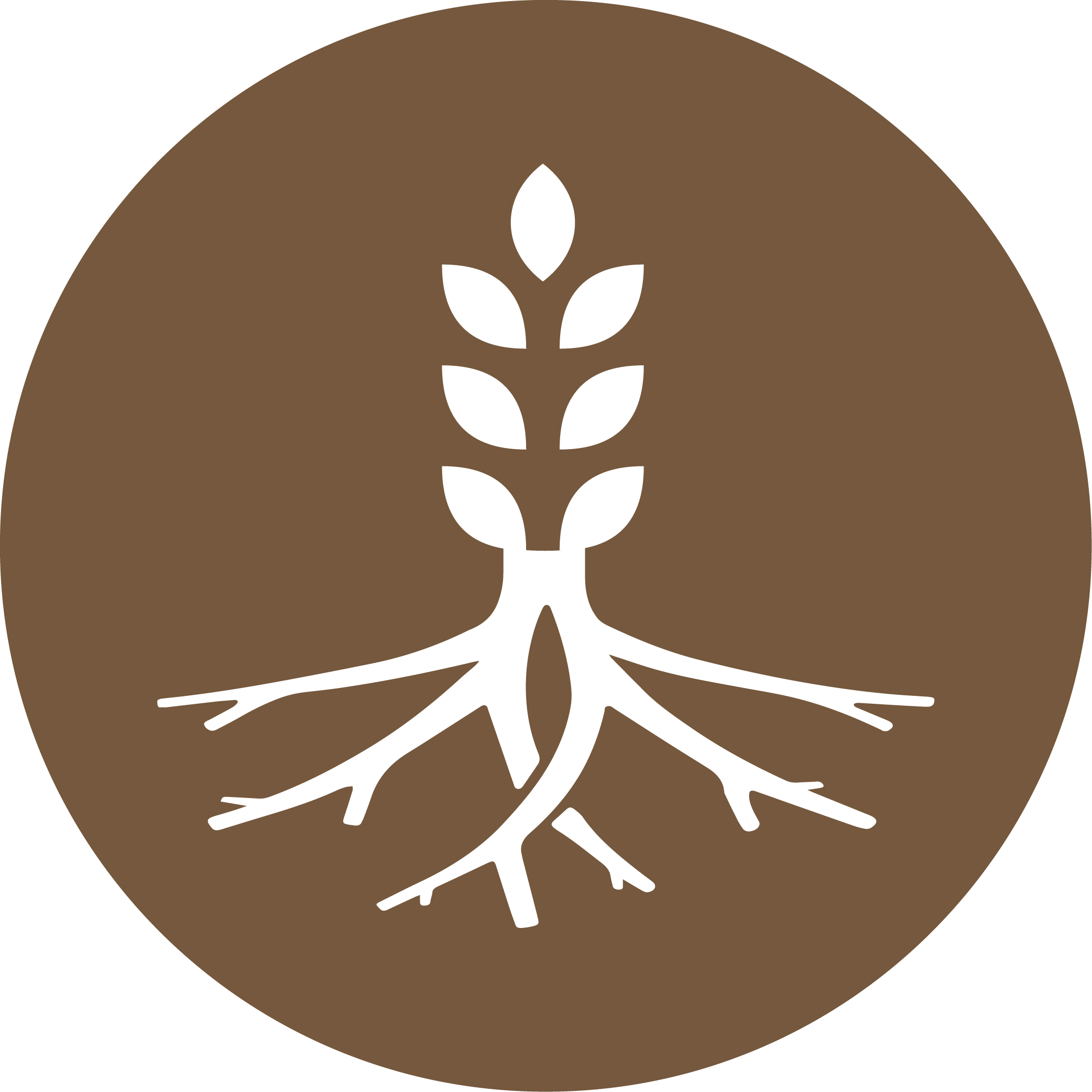Focus on rooting and plant health into spring
Though many growers find themselves in a stronger position than this time last year, with winter cropping area back up to near normal levels, there’s still a way to go to ensure crops produce a prosperous yield for harvest 2021. A focus on rooting and plant health into spring is going to be key to producing high-yielding crops and biostimulant Bridgeway could have a valuable role to play, having shown significant benefits in trials.
Thankfully, winter cropping is in a much better place than it was last year, with a resurgence in wheat and barley to near normal levels, according to the latest Early Bird Survey conducted by the Andersons Centre in December. So, whilst we’ve had some record-breaking rainfall over the autumn and winter, so far it’s not been as dramatic and memorable as it was this time last year, and crops are in pretty good shape.
Stress free essential to maximise potential
However, a big fundamental to high yielding crops is root structure and sunlight capture and whilst many crops have got off to a good start, some fields across the country have had considerable rainfall over the last couple of months, on already saturated soils, and may require remedial intervention to get crops back on track.
Key focus into spring
- Root enhancement & nutrition
- Leaf & tiller health
- Minimise stress

Root enhancement & nutrition
The rooting ability of crops is not only vital for anchorage to prevent lodging, it is also critical for the uptake of water and nutrients. As crop growth starts to accelerate in warmer conditions, access to much needed moisture and nutrients through the roots will be vital.
High moisture levels reduce the plant’s first impulse to grow a deep root system for itself so it will be important to rectify problem fields so crops are set up for the drier conditions later. Short-lived flash floods after a downpour seldom harm most plants. It is prolonged, saturated soil that causes the most damage, as oxygen gets used up by the plant roots and soil microorganisms. Root function therefore becomes reduced and roots can start to die off, resulting in above ground symptoms to leaves and stems as they become unable to obtain any water or nutrients to move around the plant.
Heavy rainfall can also contribute to nutrient leaching, especially in light soils, making it inaccessible. So come end Feb, any crops which have been sat in water for some time or were late drilled, are likely to have shallow roots and may require remedial intervention to help stimulate growth and rectify any nutritional deficiencies.
Leaf & tiller health
Leaf and tiller health is critical for the production of high yielding, high quality crops. Leaf number determines canopy size and photosynthesis, and tiller number is related to the number of ears at harvest and therefore yield potential. Small canopies in to spring waste available sunlight so it is important to ensure that any poorly established or backward crops coming out of winter are taken care of. Balanced crop nutrition will be important to aid leaf growth and tiller survival, but bear in mind uptake could be slow where roots have become damaged over winter.
Minimise stress
Any winter-sown crops sat in wet waterlogged soils will have suffered water stress, which will impact productivity. Most winter crops can tolerate 3-7 days of water stress – oats are the most tolerant, followed by wheat and then barley. Barley is particularly vulnerable at 5-8 leaf stage because ear formation occurs at 5th leaf stage and waterlogging decreases pollen viability.
Flooding reduces respiration, damages roots and reduces nutrient movement – it can reduce leaf size and leaf area and limit the plant’s ability to photosynthesise impeding crop growth – when really out of winter – we will need crops in good health to maximise early growth and set up the crop to yield. These crops will need some TLC to improve plant health as we move into spring.
A dry spring will undoubtedly put the crop under abiotic stress and directly impact growth and productivity. Under stress, crops halt growth producing proteins to focus on stress reduction and recovery. Photosynthesis slows, and the crop must utilise energy to survive. Keeping crops fit, healthy and topped up with a ready-to-go supply of stress-busting amino acids will help to protect crops from stress and ensure growth and development can continue as smoothly as possible.
In barley, minimising crop stress and maintaining optimum plant health can reduce the impact of ramularia that typically manifests at flowering. Without chlorothalonil, the resistance to strobs and azoles, and with SDHIs much less effective than they were, keeping barley stress free could be important to help keep the disease out of high risk crops. Similarly, replicated trials have also shown fitter plants are less prone to Septoria and yellow rust infection. Building plant health is therefore key to efficient and profitable crop production.
Stress free essential, maximise potential with Bridgeway
Have your winter crops been sat in cold, waterlogged soils? Seeking the best start to spring crop establishment? Biostimulant Bridgeway could be the key to building resilience in crops battling to find their legs, whilst also ensuring a stress free start to maximise returns at harvest.
Biostimulant Bridgeway could help struggling crops get back on their feet by helping to restore root systems and build tiller health. The ability of Bridgeway to stimulate root and shoot growth, and overcome abiotic stress, makes it a valuable tool to boost plant health out of winter and optimise plant health into spring. Biostimulants influence physiological and biochemical pathways in plants thereby having a direct influence on plant growth and development. The beauty of using a foliar biostimulant like Bridgeway is the speed at which it starts working. With uptake through the leaf stoma, uptake is instant.
100% natural, plant based and of the highest quality, Bridgeway contains all 18 L-amino acids and peptides required for healthy growth and development:

No.1 root & shoot growth
Research at the University of Nottingham over the last few years has shown Bridgeway significantly increases root and shoot growth, and is one of the best biostimulants on the market with a mean increase of +43% roots and 31% shoots.




Fitter crops, higher yields
By improving plant health, Bridgeway has been delivering a wide range of benefits on farm and in replicated field trials:
- Higher nutrient uptake
- Reduced liquid fertiliser scorch
- Significant reduction in brackling
- Significant reduction in Septoria & yellow rust infection in low-moderate disease resistant varieties
- Higher yields in stressed crops
Higher energy, increased productivity
- Higher Brix levels
- Higher yields in the absence of other limiting factors


Bridge your way to success with our NEW product guide

Download your copy now to maximise potential
To discover more about the benefits of Bridgeway, results on farm, and to find out more about how Bridgeway can help you to improve the health of your crops, download our guide below.








